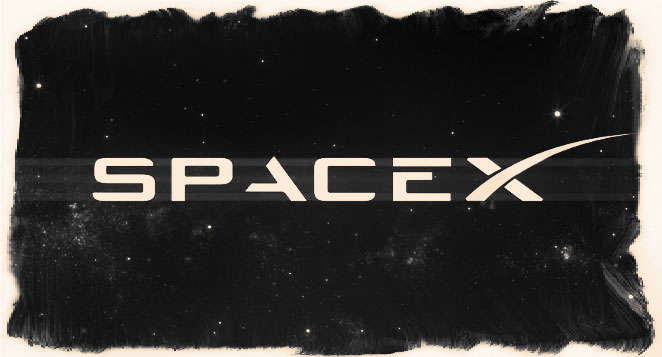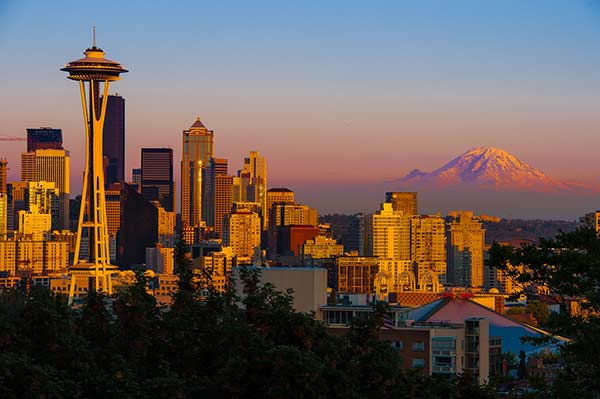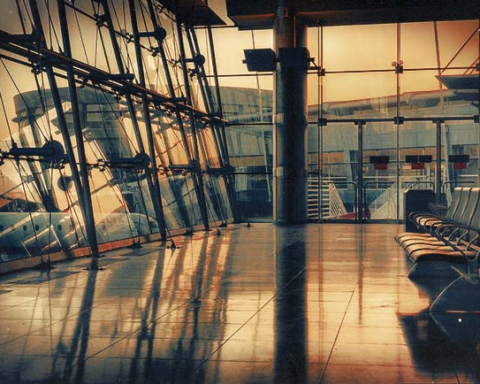
SpaceX was founded in 2002 by Entrepreneur Elon Musk. The company headquarters are located in Hawthorne, California. SpaceX designs, manufactures and launches advanced rockets and spacecraft. The company vision is to revolutionize space technology, with the goal of enabling people to live on other planets. Musk wants humans on Mars–to flourish, live, and create an ‘Earth-like’ planet over time. But why Mars? The reason to go is that we have two paths as humans, Musk said: One path is we stay on Earth forever and eventually face an extinction event. The alternative is to become a space-faring and multi-planetary species, “which I hope you would agree that is the right way to go.” The goal then is to create a self-sustaining city that isn’t just an outpost, he explained, but that “can become a planet in its own right.” Mars makes sense for this because of several reasons, including its size similarity to Earth. If you want to read more about Elon Musk, check out the exclusive article on the Emerald City Journal about how he is the 21st century Father of invention.
The journey to Mars began in 2006 when Musk invested 100 million dollars into his start-up with the goal of building rockets. SpaceX has focused on three rockets, the Dragon, Falcon 9, and Falcon Heavy. SpaceX has gained worldwide attention for a series of historic milestones. It is the only private company ever to return a spacecraft from low-Earth orbit, which it first accomplished in December 2010. The company made history again in May 2012, when its Dragon spacecraft attached to the International Space Station, exchanged cargo payloads, and returned safely to Earth—a technically challenging feat previously accomplished only by governments. Since then Drago has delivered cargo to and from the space station multiple times, providing regular cargo resupply missions for NASA.
SpaceX has a busy future ahead, as a contract with NASA will fund its work. Under a $1.6 billion contract with NASA, SpaceX is flying numerous cargo resupply missions to the International Space Station, for a total of at least 20 flights under the Commercial Resupply Services contract. In 2016, NASA awarded SpaceX a second version of that contract that will cover a minimum of 6 additional flights from 2019 onward. Soon, SpaceX will carry crew as part of NASA’s Commercial Crew Program as well. Dragon was designed from the outset to carry astronauts and SpaceX is in the process of upgrading Dragon to make it crew-ready. SpaceX is the world’s fastest-growing provider of launch services and has over 70 future missions on its manifest, representing over $10 billion in contracts. These include commercial satellite launches as well as NASA and other US Government missions. Currently under development is the Falcon Heavy, which will be the world’s most powerful rocket. SpaceX continues to work toward one of its key goals—developing reusable rockets, a feat that will transform space exploration by delivering highly reliable vehicles at radically reduced costs.
Elon Musk official SpaceX biography below:
http://www.spacex.com/elon-musk
Musk believes that there are certain roadblocks to the colonization of Mars- the big issue being who wants to go and who can afford to go. Currently, the cost numbers about $10 billion per person. Musk is working to achieve overlap between people who want to go and people who can afford to go. His goal is to get the cost of moving to Mars around $200,000. The idea being that is people saved up and this was their primary goal, they could make it work. So how does Musk plan to make the cost reduction? Musk noted that this is where it gets tricky. How does one improve the cost of trips to Mars by 5 million percent? The key ingredients are full re-usability of ships and vehicles, and the rest is made up by refiling in orbit, producing more propellant on Mars for return trips, and choosing the right propellant to make that possible and efficient.
Musk said the more frequent the flights, the more the trip on a terrestrial aircraft goes down. He used an example to illustrate saying, “It cost $43 for LAX-to-San Diego flights, for instance, versus $1 million for single use trip if the aircraft were turned every time it made a run.” The number of times it’s feasible to re-use craft for Mars verses flying commercial on Earth, is less, since you can use the spaceship part only every two years. But the booster and tanked can be “used as much as you like,” letting you refill the spaceship in orbit and giving you a large payload capability for that spaceship’s trip to Mars.” The re-usability of ships back and forth between Mars is another key cost reduction ingredient, and that requires building a propellant plant on Mars, Musk said. Mars happens to work out well for that because of CO2 atmosphere and water ice in the soil. Managing fuel type also influences the cost and there are three main choices. These include kerosene, hydrogen/oxygen, and deep-cryo methalox. Musk’s target sustainable population is 1 million people for a Mars colony, and that means 100 people per trip is 10,000 trips. At that rate, it will take 40 to 100 years to colonize Mars. Musk notes how he wants the journey to Mars to be experienced. According to TechCrunch, “It has to be really fun and exciting, and can’t feel cramped or boring.” This means ships would include movies, cabins, restaurants, zero-gravity games, and whatever else is thought up.
Between the testing funded by NASA and the cost-reduction problem, getting to Mars will take time? But the question is, how much time? Musk said that SpaceX is looking to compete the first development spaceship in about four years, and to starting doing server like flights within that time. Musk said he would probably name the first ship that goes to Mars Heart of Gold, referencing the ship from Hitchhiker’s Guide to The Galaxy. “I like that it’s driven by infinite improbability because our ships is also infinitely improbably.”
SpaceX Secures Mars Rocket Factory in Los Angeles
A true entrepreneur, Musk founded his third company, in 2002 called Space Exploration Technologies Corporation, or SpaceX with the intention of building spacecraft for commercial space travel. The company has excelled in the past two years, and just hit another important milestone. The factory for the Big Falcon Rocket, produced by SpaceX, will be built in the Port of Los Angeles, according to media reports. SpaceX has secured the necessary approval from the LA Board of Harbor Commissioners to proceed with the factory.
CEO Elon Musk expects the new rocket to be around 350 feet high and around 30 feet in diameter. This size will require the space vehicle to be transported on an ocean-going barge to Cape Canaveral, Florida, via the Panama Canal. The location of the factory near a waterfront will make it easy to transport the rocket for testing and its consequent launch. The launch vehicle’s design makes it reusable, and it will be built in two different parts, the booster stage, and the upper stage. The booster will handle the operations related to the landing capacities of the Falcon rockets, while the upper stage will be built to transport satellites, supplies, as well as people. According to a Port executive, Florida, Texas and Louisiana were considered as alternatives for building the BFR, whose 30-foot diameter is too large to transport by a truck like Falcon rockets and requires that it be barged. The Port of Los Angeles will charge SpaceX $1.38 million per annum. “This is the perfect spot to build our big rocket,” said Bruce McHugh, SpaceX’s director of construction and real estate, during a public meeting of the Los Angeles Board of Harbor Commissioners. Based on the necessary land surveys, the waterfront of the Los Angeles port appeared as the most suitable site. The new rocket manufacturing facility is expected to be built on a 19-acre plot on the mostly artificial island that’s part of the port.
SpaceX has made its mark in the space industry and has emerged as a competitor among other successful companies. One of their major milestones can be marked on Feb. 6, 2018 when SpaceX successfully launched the Falcon Heavy which is the most powerful operational rocket in the world. While the launch is a technical and style feat in itself, SpaceX has also achieved a business feat. The company has radically reduced the costs of launching a rocket. Musk has talked about the reusability of technology being a contributing factor to colonizing Mars. The first trip in 2022 would drop off equipment made to harvest water and carbon dioxide from the air and convert it into methane using solar energy. That fuel would be stored in depots to refill Earth-bound BFRs. The second trip in 2024 which would be crewed by astronauts. The company is building this craft to take people to the Red Planet and other destinations throughout the solar system. The spaceship will likely accommodate 100 or more passengers at a time. SpaceX has said it plans to use the BFR to help establish a million-person city on Mars, ideally in the next half-century or so.
The first crewed Red Planet mission could come in the 2020s, according to Musk. Musk has said, “People have told me that my timelines, historically, have been optimistic,” Musk said at SXSW. Between Tesla release dates and SpaceX launch delays, Musk has a sense of humor about the process of being an innovator and entrepreneur. Key to his thinking is the concept of reusability, part of the reason the Falcon 9 mission was such a milestone for SpaceX. The same vehicle could fly again and again. Musk knows that future technology must also be sustainable. This is his whole outlook, not to just advance society, but to sustain one. In 2012, SpaceX advertised a launch price of $57 million for Falcon 9, a two-stage rocket designed and manufactured by the company to transport satellites. At that point of time, the market for rocket launches was dominated by Arianespace, a French company that had a head start of more than three decades over SpaceX. The ultimate goal of SpaceX is to colonize Mars. Human civilization faces many grave threats over the long haul, from asteroid strikes and climate change to artificial intelligence run amok, Musk has said over the years. Musk has warned for some time about the dangers to AI and the threat that it poses the survival of humanity. In a span of five years, Musk has led SpaceX to close the gap between cost and competition. SpaceX has been working to make its rockets partially reusable since as early as 2011. Up until this year, pretty much all orbital rockets have been expendable, so they’re disposed of once they launch into space. That means an entirely new rocket, which can cost tens to hundreds of millions of dollars to make, must be built for each mission to orbit. SpaceX’s strategy has been to land its rockets after launch to fly them again and again. SpaceX has become more cost-efficient with this success. The company can now save hundreds of millions when launching rockets. Regardless of its inspirations, the company was forced to adopt a goal, make it cheaper. With rocket technology, Musk has said, “you’re really left with one key parameter against which technology improvements must be judged, and that’s cost.”
As previously mentioned Musk believes that humans have the best chance of survival if they are a multi-planetary species. Musk said he would probably name the first ship that goes to Mars Heart of Gold, referencing the ship from Hitchhiker’s Guild to The Galaxy. “I like that it’s driven by infinite improbability because our ships are also infinitely improbably,” Musk said. Musk doesn’t sugarcoat his feeling about humans and their ability to repeat mistakes without realizing how large the implications could be. “Last century, we had two massive world wars — three if you count the Cold War,” Musk said earlier this month at the SXSW festival in Austin, Texas. “I think it’s unlikely that we’ll never have another world war again,” Musk said. As bleak as these statements might seem for the future of humanity, it isn’t as far-fetched to see that we could ultimately destroy our species with how we treat our world and rising international tension. Rather than a pessimist, Musk is a realist, with a plan. Obtaining the proper space to build this history-changing rockets puts Musk and his team on their way to colonizing Mars. The mayor of LA is excited about this opportunity to help the company. Los Angeles Mayor Eric Garcetti said, “This is a vehicle that holds the promise of taking humanity deeper into the cosmos than ever before,” further adding about the benefits of employment creation in the region, “And this isn’t just about reaching into the heavens. It’s about creating jobs right here on Earth.” And Musk has been rather blunt in saying that to keep jobs on earth, we need to extend our presence outside of the planet we currently inhabit. The new factory expected to employ around 700 people.
What does it take to build a successful business or empire? Entrepreneurs look at the Elon Musk’s of the world and ask themselves the same thing. How has he been as successful as has? Entrepreneurs can often rub people the wrong way because they’re passionate about what they’re working towards and show it. They typically have strong opinions and personalities and aren’t afraid to tell you what they think. This is what makes them so successful. Most entrepreneurs fail a business or start-up at some point. They are risk-takers and dreamers at heart. The difference between your average Joe and an entrepreneur, is that failure is not a roadblock to an entrepreneur but will fuel them into another venture. An entrepreneur puts in more hours and can see beyond the everyday operations of a business and does more dirty grit work than anyone will ever know about. They do not listen to those who say ‘it can’t be done,’ they are too busy working to make it happen. If you get caught up in the “buts” or little details of things, it will be difficult to get out of your own way. Entrepreneurs chose to look past what others see as obstacles and think of what ‘could be.’ They think bigger than most people. This vision is fueled by the right people, a healthy dose of confidence, and a work ethic that doesn’t quit. Between SpaceX and Tesla, there were plenty of times other people would have thrown the towel in. Musk wants humans on Mars–to flourish, live, and create an ‘Earth-like’ planet over time. But why Mars? The reason to go is that we have two paths as humans, Musk said: One path is we stay on Earth forever and eventually face an extinction event. The alternative is to become a spacefaring and multi-planetary species, “which I hope you would agree that is the right way to go.” The goal then is to create a self-sustaining city that isn’t just an outpost, he explained, but that “can become a planet in its own right.”
Musk knew that it was a long shot to get SpaceX to where it stands today, but it’s a pretty big milestone have locked down a location where his company will be producing the BFR. Elon Musk poses a special kind of tenacity and perseverance that a leader of innovative companies should poses. Musk is a professional at maximizing time and energy. A recent email he sent to his company was praised for its professional, productive, and powerful message. Don’t waste time doing things that aren’t moving things forward. Musk is a professional at time management and getting things done. Sure, there might be setbacks and systems to improve with the BFR and getting to Mars, but that won’t stop him from moving forward. And when trying to do something that no one has done before, this is just the kind of thinking that is needed. The SpaceX website features a quote by Musk that nicely summarizes his motivation behind his efforts to colonize Mars. Musk says, “You want to wake up in the morning and think the future is going to be great – and that’s what being a spacefaring civilization is all about. It’s about believing in the future and thinking that the future will be better than the past. And I can’t think of anything more exciting than going out there and being among the stars.” SpaceX is often keeping people on their toes with a heavy lineup of rocket launches. This year projects the most robust rocket launching schedule we have seen. SpaceX technicians at Cape Canaveral are readying for the first launch of an upgraded Falcon 9 rocket configuration next week, a mission that will debut changes to make the launcher safer for astronauts and make it easier and less expensive for the company to reuse first stage boosters. The launch is set for the first week of May.
Colonizing Mars has always been Elon Musk’s vision for humanity. Creating sustainable technology, cost of experimentation and travel, and safely establishing life on a new planet have been viewed as ambitious undertakings. Musk is an active social media user and showed off his new “tool” for colonizing Mars in an Instagram post. The Instagram photo was of “the main body tool” for the BFR (Big Falcon Rocket, or Big F—ing Rocket). This post was shared shortly after Musk’s full paper, titled “Making Life Multi-Planetary,” published by the journal New Space. The paper published in the journal New Space is based on Elon Musk’s October 2017 talk that he gave in Australia. The action plan is starting to take shape, as shown in the Instagram post.
Elon Musk recently outlined in an academic paper on what life on the red planet could look like. The BFG is the key to these mars missions going efficiently. With the BFG the spaceflight system will be extremely flexible, and SpaceX has said it plans to use the rocket for a variety of purposes, from planetary settlement to satellite launches to point-to-point transportation of people here on Earth. Musk has said that the company aims to eventually phase out its other rockets and spacecraft and let BFR carry the load. SpaceX founder and CEO Elon Musk posted a photo on Instagram on April 8, 2018. It shows “the main body tool” for the company’s Mars-colonizing BFR spaceship, along with a Tesla car for scale. And the Tesla car looks like unimpressive next to the sizeable piece of machinery.
The company is building this craft to take people to the Red Planet and other destinations throughout the solar system. The spaceship will likely accommodate 100 or more passengers at a time. The BFR will also incorporate a rocket, which will feature 31 Raptor engines and be capable of lofting 150 tons to low Earth orbit. The BFR rocket-spaceship combo will stand 348 feet tall when stacked together, Musk has said, and both components will be fully reusable. SpaceX has said it plans to use the BFR to help establish a million-person city on Mars, ideally in the next half-century or so. The first crewed Red Planet mission could come in the 2020s, according to Musk.
The new photo isn’t the first clue of BFR progress that Musk has put out there. The entrepreneur said at the South by Southwest (SXSW) Conference in Austin, Texas, that construction of the first prototype BFR spaceship is underway. That vehicle could be ready for its first short test flights by the first half of 2019, he said. The Instagram post was a reminder the public know that they are working hard on the development of the rocket. Plus, it looks awesome next to the Tesla.
The ultimate goal of SpaceX is to colonize Mars. Human civilization faces many grave threats over the long haul, from asteroid strikes and climate change to artificial intelligence run amok, Musk has said over the years. Musk has warned for some time about the dangers to AI ad the threat that it poses the survival of humanity. Musk has recently commented on how we regulate AI and technology Amid the firestorm surrounding Facebook CEO Mark Zuckerberg’s Senate hearing, Tesla CEO Elon Musk, about the Facebook controversy during an interview Tuesday in California. “Do you think now is the time for regulations in Silicon Valley?” “I think whenever something is – whenever there’s something that affects the public good then there does need to be some form of public oversight. … I do think there should be some regulations on AI. I think there should be regulations on social media to the degree that it negatively affects the public good,” Musk said. Musk has a habit of bringing up his concern for AI in a fairly regular way. In a recent interview at SXSW talk, he said, “I’m very close to the cutting edge in AI,” Musk said, and that seems to both excite and scare him. “It’s capable of vastly more than almost anyone knows, and the rate of improvement is exponential,” he explained, using AlphaGo’s history of learning as an example. “Mark my words: AI is much more dangerous than nukes,” Musk warned, adding that there should be a “regulatory oversight” for the technology. “We have to ensure that the advent of digital super-intelligence is one which is symbiotic with humanity,” Musk said. “I think that’s the single, biggest existential crisis that we face — and the most pressing one.”
As previously mentioned Musk believes that humans have the best chance of survival if they are a multi-planetary species. Musk said he would probably name the first ship that goes to Mars Heart of Gold, referencing the ship from Hitchhiker’s Guild to The Galaxy. “I like that it’s driven by infinite improbability because our ships are also infinitely improbably,” Musk said. Musk doesn’t sugarcoat his feeling about humans and their ability to repeat mistakes without realizing how large the implications could be. “Last century, we had two massive world wars — three if you count the Cold War,” Musk said earlier this month at the SXSW festival in Austin, Texas. “I think it’s unlikely that we’ll never have another world war again, ” Musk has said. A true entrepreneur, Musk founded his third company, in 2002 called Space Exploration Technologies Corporation, or SpaceX with the intention of building spacecraft for commercial space travel. As bleak as these statements might seem for the future of humanity, it isn’t as far-fetched to see that we could ultimately destroy our species with how we treat our world and rising international tension. Rather than a pessimist, Musk is a realist, with a plan.
In his most recent academic paper, Musk focuses on what technology would be used, the importance of reusability, cost, and timelines. Musk elaborated on SpaceX’s plans to build a fully reusable system. Explained in his new study and presentation, the spaceship can be refilled with fuel while in orbit, then fired off to the moon, Mars, or somewhere else in the solar system. SpaceX’s first missions to Mars would come in 2022 and 2024, according to Musk’s plan — though he has emphasized that the timeline is “aspirational.” “People have told me that my timelines, historically, have been optimistic,” Musk said at SXSW. Between Tesla release dates and SpaceX launch delays, Musk has a sense of humor about the process of being an innovator and entrepreneur. The first trip in 2022 would drop off equipment made to harvest water and carbon dioxide from the air and convert it into methane using solar energy. That fuel would be stored in depots to refill Earth-bound BFRs. The second trip in 2024 which would be crewed by astronauts.
In Musk’s paper, earth to earth transportation is addressed in the context of using the same technology as the BFR. Musk said, “most of what people consider to be long distance trips would be completed in less than half an hour. The great thing about going to space is there is no friction, so once you are out of the atmosphere, it will be smooth as silk. No turbulence. If we are building this thing to go to the Moon and Mars, then why not go to other places on Earth as well”?
Musk also addressed what life will look like on the red planet in his paper. “It will start off building just the most elementary infrastructure, just a base to create some propellant, a power station, blast domes in which to grow crops — all of the sorts of fundamentals without which you cannot survive,” Musk said. Using his own entrepreneurial wired brain, Musk also made a comment about the immense ventures and new ideas that mars could actualize. “And then really there’s gonna be an explosion of entrepreneurial opportunity because Mars will need everything from iron foundries to pizza joints. I think Mars should have great bars: The Mars Bar.” Musk has said SpaceX plans to test-launch the first spaceship on short “up-and-down flights” before the summer of 2019. This will likely occur at SpaceX’s remote facility in McGregor, Texas.
SpaceX recently applied to take over an 18-acre site in the Port of Los Angeles, which is 14 miles south of its Hawthorne, California headquarters. The goal appears to be the construction of a factory that will build the first BFR spaceships. Musk has said SpaceX plans to test-launch the first spaceship on short “up-and-down flights” before the summer of 2019.
Musk says, “Becoming a multi-planet species beats the hell out of being a single planet species. We would start off by sending a mission to Mars where it would be obviously just landing on the rocky ground or dusty ground.” Put simply; the stars are beginning to align for the very first testing campaign of full-scale prototypes of the rocket SpaceX intends to colonize Mars with. The company’s aspirational timelines can, of course, be expected to slip, but SpaceX is undeniably acquiring the hardware it will need to build those prototypes, near its prospective Port of San Pedro BFR factory, and essentially paving the way to initial hot-fire testing of a partially integrated spaceship sometime next year. A Tesla fan created a fun, Pixar-esque Elon Musk tribute video. Featuring scenes from Musk’s early days a student getting bullied, having a curiosity of life beyond earth, becoming a Silicon Valley entrepreneur to the Tesla and SpaceX CEO eventually making it to Mars, the short clip is an enjoyable watch from beginning to end. There are those out there who are cheerleading and campaigning for the dream to be a reality. SpaceX has been working to make its rockets partially reusable since as early as 2011. Up until this year, pretty much all orbital rockets have been expendable, so they’re disposed of once they launch into space. That means an entirely new rocket, which can cost tens to hundreds of millions of dollars to make, must be built for each mission to orbit. SpaceX’s strategy has been to land its rockets after launch to fly them again and again. SpaceX has become more cost-efficient with this success. The company can now save hundreds of millions when launching rockets. Musk is realistic in saying “For the people who go to Mars, it’ll be far more dangerous. It kind of reads like Shackleton’s ad for Antarctic explorers. ‘Difficult, dangerous, good chance you’ll die. Excitement for those who survive.’ That kind of thing,” the entrepreneur warned.





